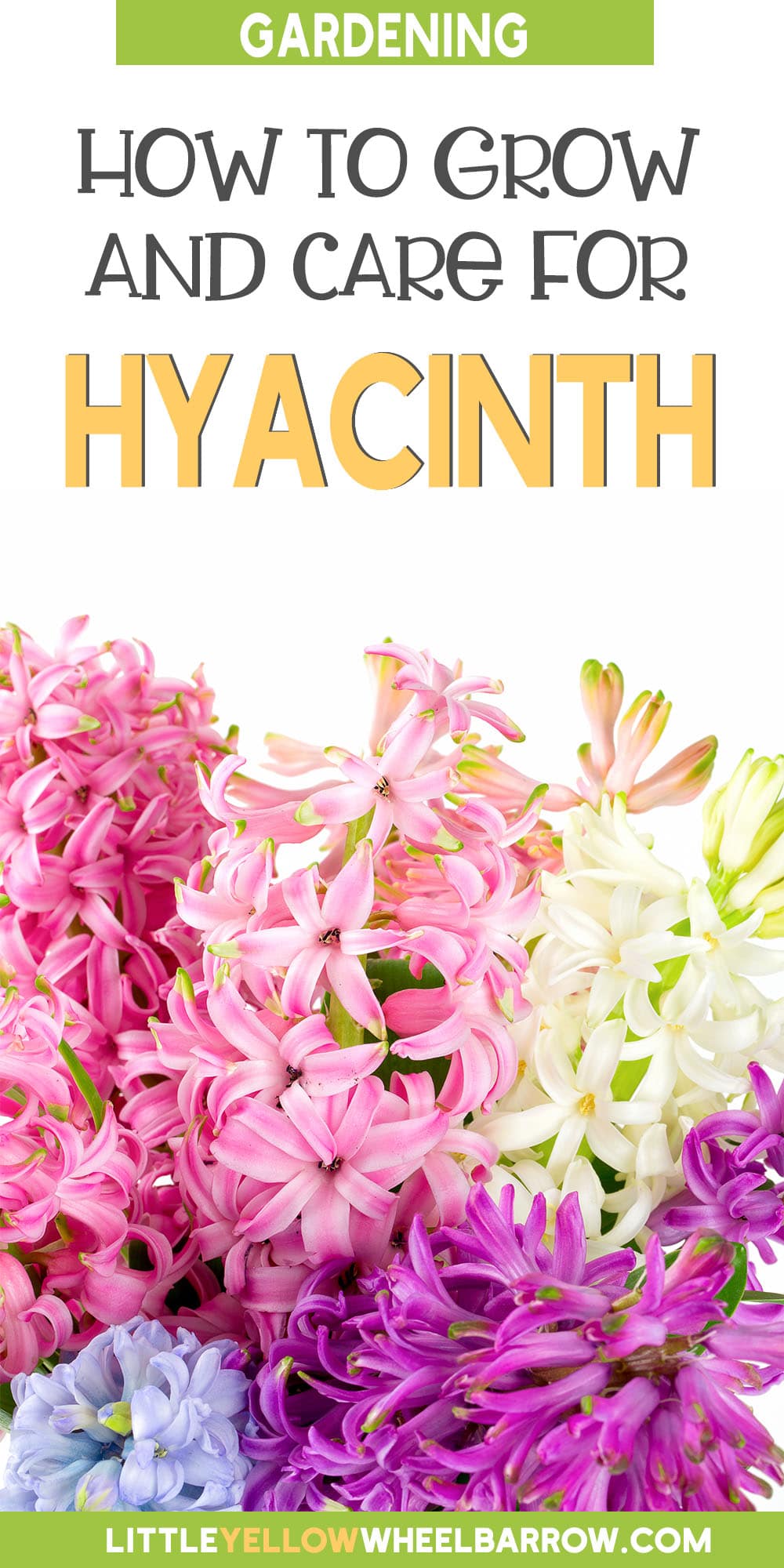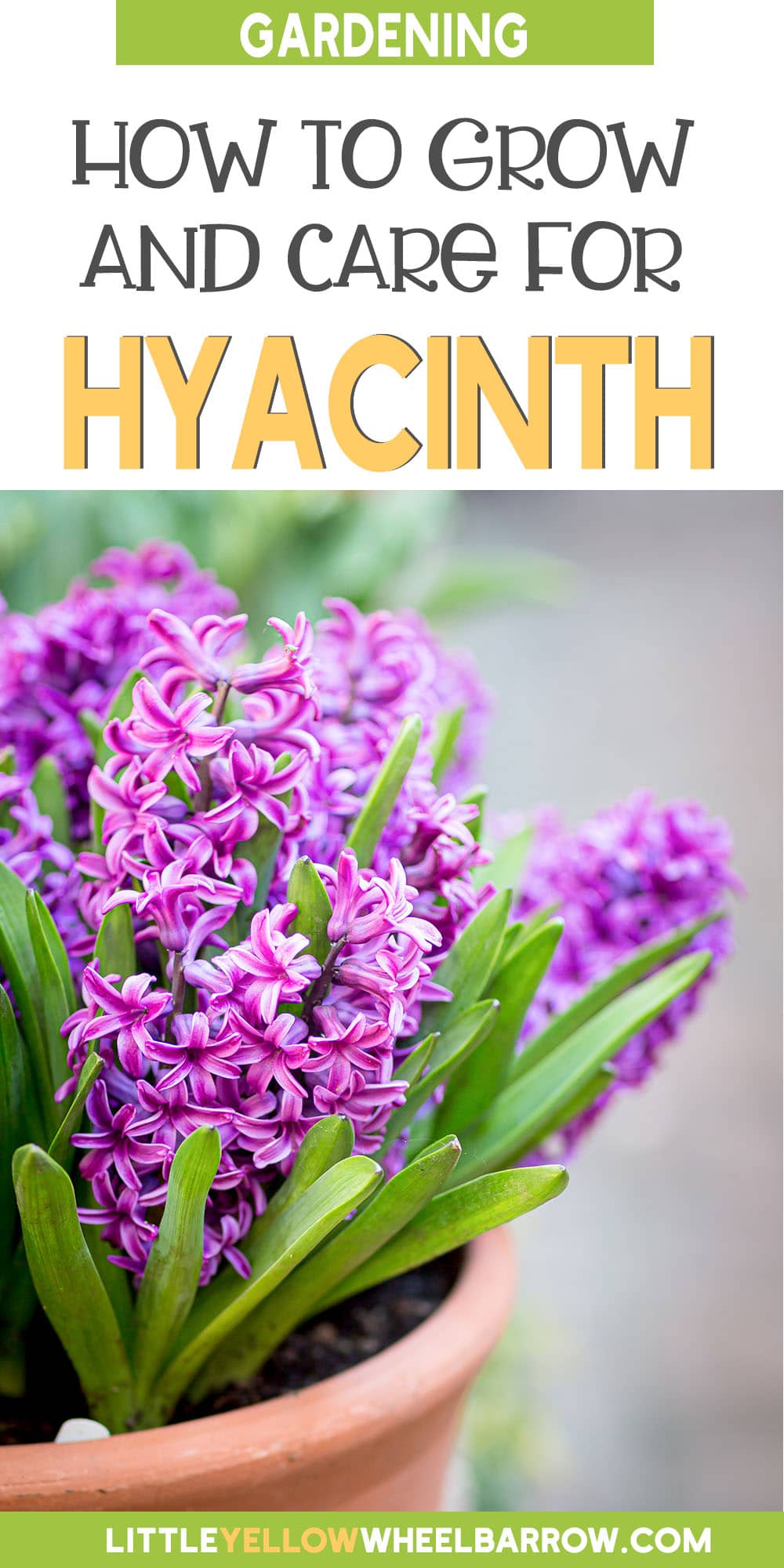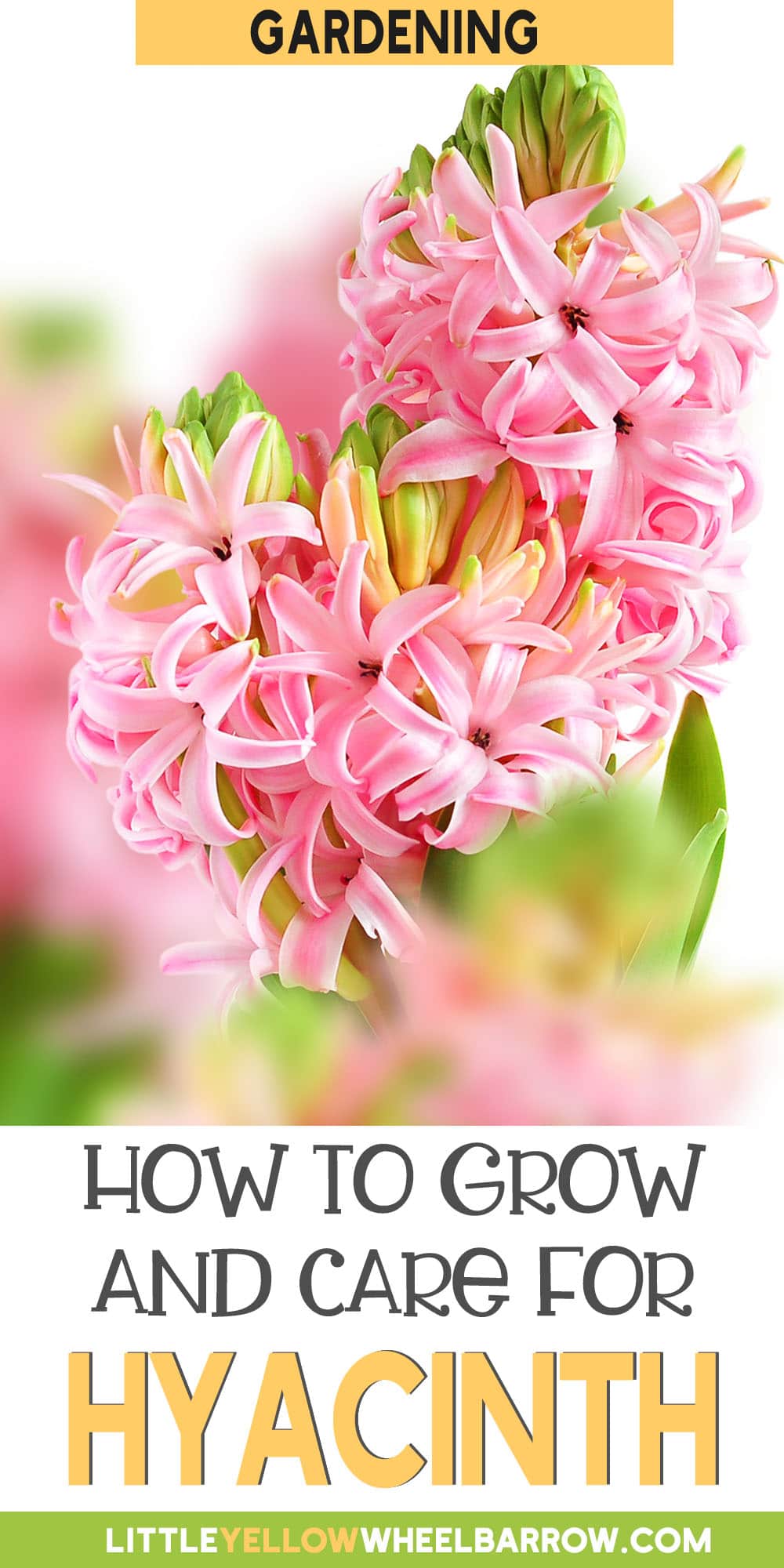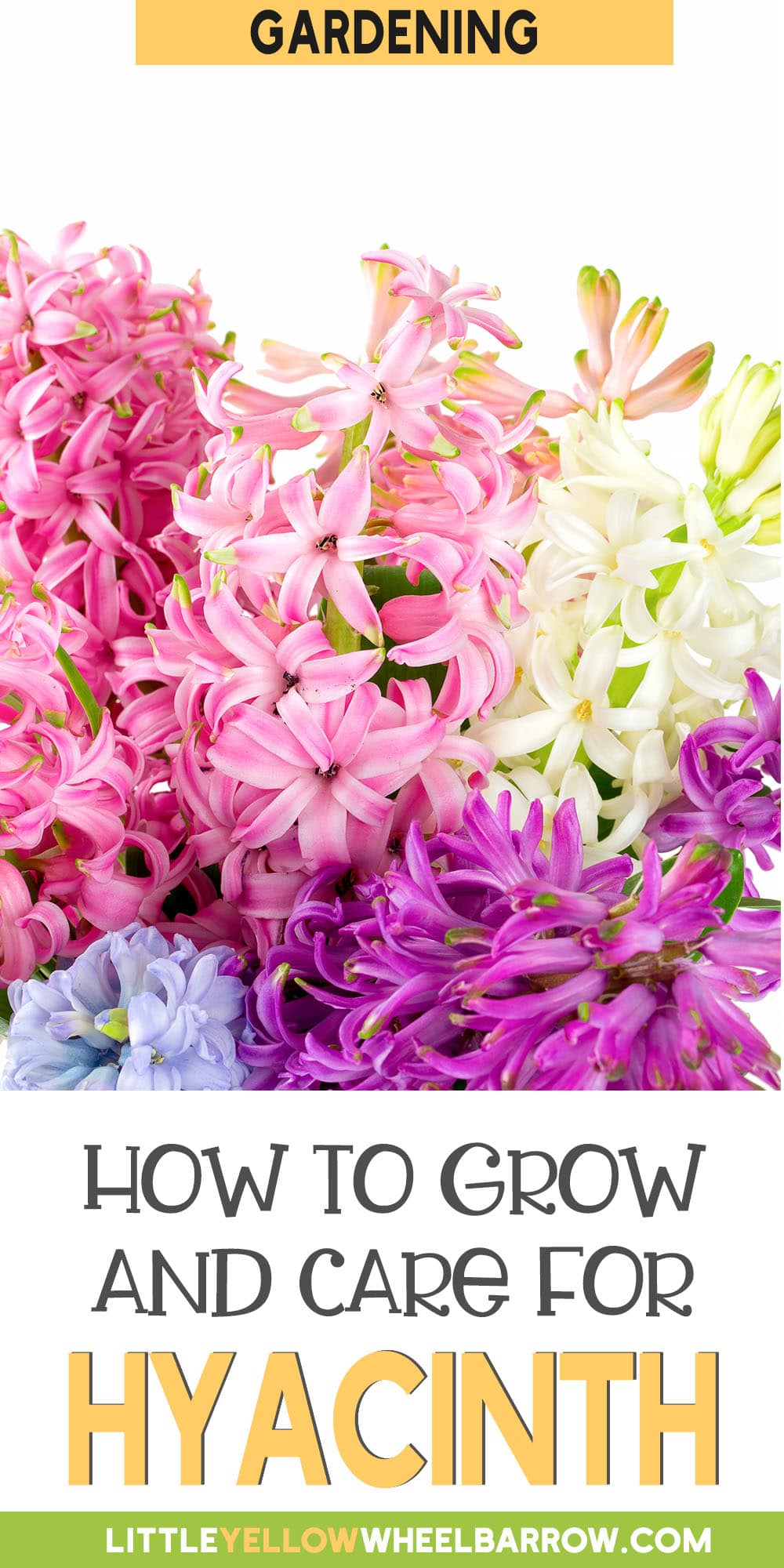How to Care for Hyacinth – Everything You Need to Know
Hyacinths are beautiful flowers that burst forth from spring bulbs. The plants produce heavily scented fragrant flowers that are excellent for bouquets. Care for Hyacinth is understanding how to plant and care for the bulbs. If you take care of the bulbs, you will have beautiful spring flower displays year after year.

Grow Hyacinth flowers in the right environment
As it is with almost every flower, the trick to growing Hyacinth is to ensure the proper environment for the bulbs to thrive.
Hardiness
Hyacinth plants are hardy to USDA zone 5. However, if you live in a northern area just on the cusp of zone 5, be sure to mulch heavily in the fall to protect the shoots that pop up in spring.
Light
Plan Hyacinths bulbs in full sun. They do best in full sun and will struggle in partial shade. However, they will tolerate light shade.
- Related: If you’re looking for shade plants, hyacinths are not the right flower for you, but we do have recommendations for flowers to fill your shade garden.
Soil
Hyacinth requires soil with excellent drainage. They do best in sandy soil with heavy and rich organic matter. They will not grow well in heavy clay soils, so be sure to amend with lots of vermiculite and compost if you have heavy clay. Excess moisture can cause rot, invite pests, and bacterial and fungal rots infections.
The pH of the soil can range from 6-8.
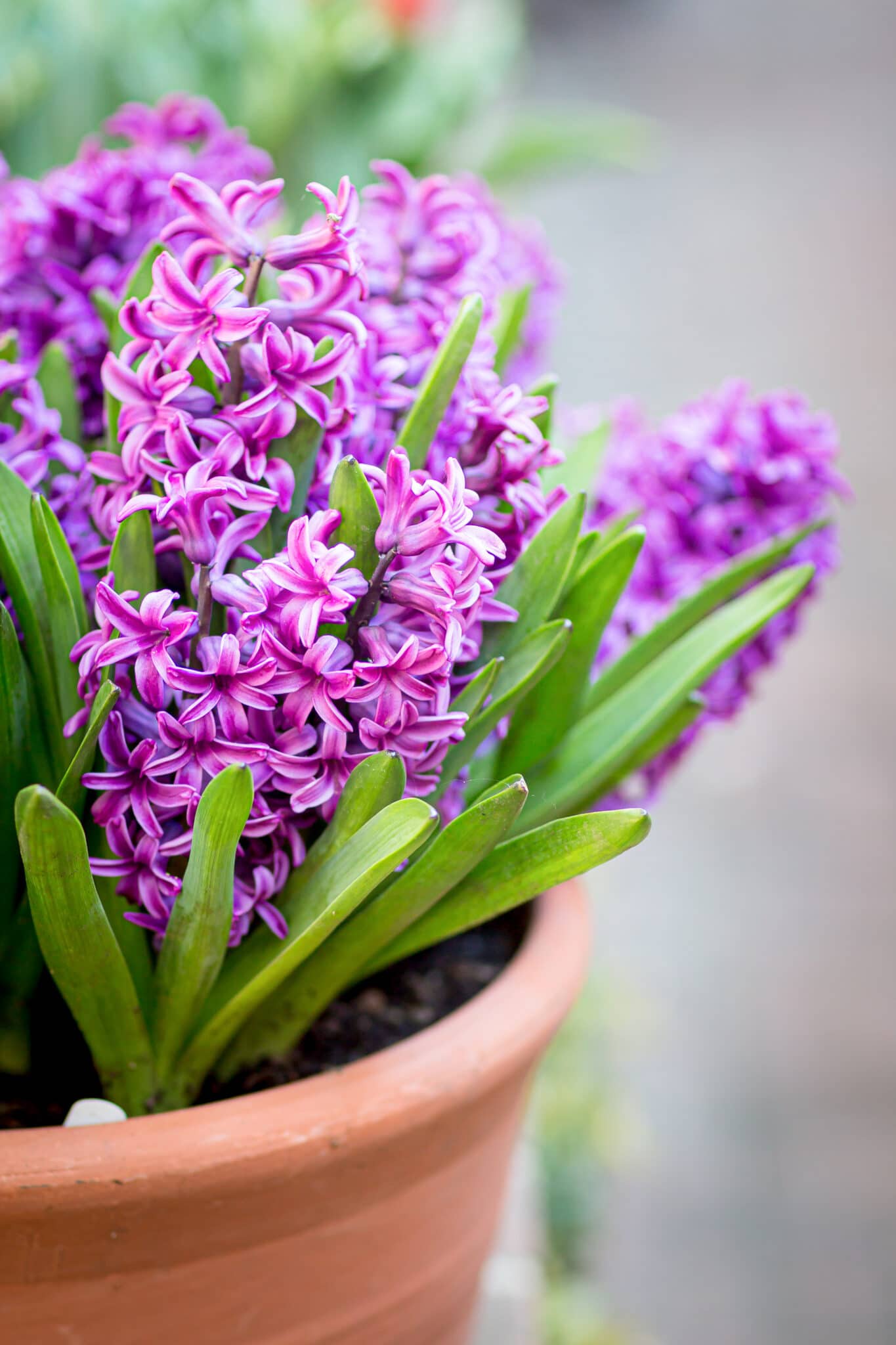
Planting and Propagation of Hyacinths
Hyacinthus orientalis, known more commonly as the common Hyacinth, garden Hyacinth, or Dutch Hyacinth, is grown worldwide for its lovely fragrant, showy blooms. These beautiful flowers grow indoors and outdoors and can last for years with proper care.
Flowers of purple, lilac, pink, rose, and white can fit any spring garden color combination. The bright white flowers look lovely in a moonlight garden.
Planting
For best results, plant Hyacinth bulbs in the fall a month before the first frost in your area. The bulbs will require some time to grow roots before the soil freezes. The best time is usually around mid-October.
Loosen the soil twelve inches deep and add plenty of compost. Plant bulbs 5-6 inches from the bottom of the bulb to the top of the soil and at least 6 inches apart.
Make sure the growing tip is pointing up. Then, fill the holes and cover the beds with mulch to protect them through the cold winter months, where winter temperatures may dip.
propagation
Hyacinths are challenging to propagate and generally do not multiply like dahlias or daffodils. However, you can propagate them by cutting an X into the base of the bulb before planting them in the fall. Small bulblets will form along with the bulb the following year.
The following spring, after the flowers have well faded away, dig the bulbs and then separate the bulblets and replant. The bulblets should bloom in 2 to 3 years. I did say it wouldn’t be easy!
Saving Bulbs
Wait for the leaves from the Hyacinths plant to die back completely.
Dig around the bulbs with a garden trowel. Avoid hitting or nicking the Hyacinth bulbs while digging. Instead, lift them out of the soil and brush off excess dirt. Dispose of any rotten or diseased-looking bulbs.
Lay the Hyacinth bulbs out on folded sheets of newspaper. Lay the bulbs out so that they do not touch or overlap. Leave the bulbs in a dry, cool dark location for three to five days until they completely dry out.
Store the bulbs in a mesh bag hanging in a cool place until it’s time for next year’s planting in the fall.
Container gardening
Hyacinths are great plants for containers and forcing pots indoors over the cold winter months. Indoor Hyacinths can be grown anytime and make excellent holiday indoor displays. In addition, they made beautiful indoor plants you can use for gift giving.
Forcing bulbs
Use a forcing jar or choose containers that will hold the bulbs just above the water and allow room for the roots below but won’t tip over when the Hyacinth blooms. Place a bulb on a vessel and add water until it reaches the bulb’s bottom. You’ll need to change the water a few times a week.
Put the bulbs in a cold (40 F to 55 F) dark place until roots develop and leave sprout for about 3 to 4 weeks.
Once foliage begins to develop, move the bulbs to a warm sunny spot for flowering. A sunny window sill is ideal. Turn them daily to prevent leaning, and change the water regularly. Be sure to check the water level often.

How to care for Hyacinth Flowers
Water
You generally do not need to water Hyacinth. They tend to get all the moisture they require from natural rainfall.
Fertilizer
Hyacinth flowers will bloom and rebloom for years without any fuss or intervention. However, a light early spring annual feeding just before the blooms appear will benefit the plants.
Flower Cuttings & Drying
Hyacinth makes excellent cut flowers for floral arrangements. The flower stalk is strong. They have wonderfully scented fragrant blooms and will perk up any space during the winter.
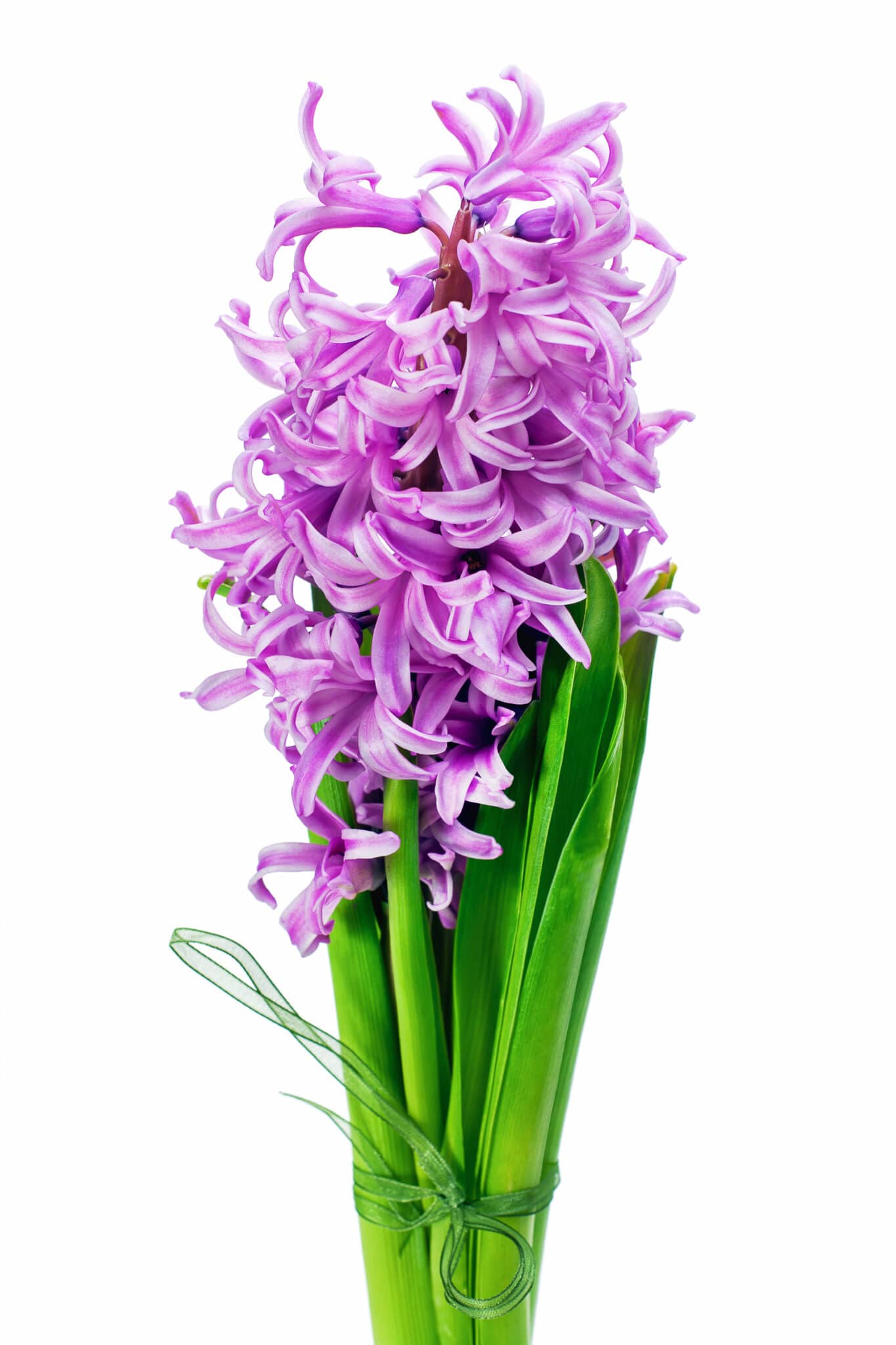
Common Insect Pests of Hyacinth Plants
Hyacinths are usually not bothered by pests, but they can get an occasional infestation. The best way to deal with any kind of pest to understand the root cause and implement preventative measures before pests can destroy your flowers and bulbs. Pest prevention and care for Hyacinth starts before you even put the bulb in the ground.
aphids
Plants infected with aphids have poor stunted growth with curled, puckered, or stunted leaves. Leaves may turn yellow, brown, or die.
You can manage light Infestations of aphids with a blast of forceful water every few days. If that is not effective, you can spray the plants with insecticidal soap every 4-5 days for up to 3 weeks.
Bulb and Stem Nematodes
Bulb and stem nematodes will prevent flowers from growing in spring or prevent the bulb from flowering.
Plants that are infested are deformed and have yellow-green spots and swollen spots on the stems. To confirm disease dig out the bulb and cut it in half. If the bulb presents with dark circles or yellow blotches you likely have an infestation of bulb nematodes.
To control the infestation dig and destroy bulbs along with the soil in which they were growing. Do not compost.
Bulb Flies
Bulbs that are soft at planting time or plants that do not arrive come springtime can be infested with bulb flies.
The insects are blackish green, about 1/3 inch long. The insects lay eggs near the base of bulb leaves, and their larvae bore into the bulbs. Damage done by these insects can lead to bacterial and fungal rots so it is important to deal with an infestation quickly.
The best way to avoid bulb files is to inspect your bulbs well when buying or planting. Dispose of any bulbs that feel soft or have holes.
Bulb Mites
An infestation of bulb mites presents with similar visual symptoms as bulb flies. In springtime flowers do not arrive, or they arrive with stunted deformed leaves.
The tiny white bulb flies are attracted to rotting bulbs. Their feeding will cause brown spots around the surface of the bulbs. Mite damage is also an invitation to bacteria and fungus.
To control, remove and destroy heavily infected bulbs, soil and all. Do not compost.
Do not plant new bulbs in an area where an infestation occurred.

BAD BUG BEGONE!
$5.99
Are harmful insects running your gardening season?
Our guide to organic pest control methods offers practical solutions for dealing with common garden pests without using harmful chemicals. With step-by-step instructions and easy-to-follow tips, you’ll learn how to create a pest-resistant garden that is safe for your family and the environment. A great on-hand resource for any gardener!
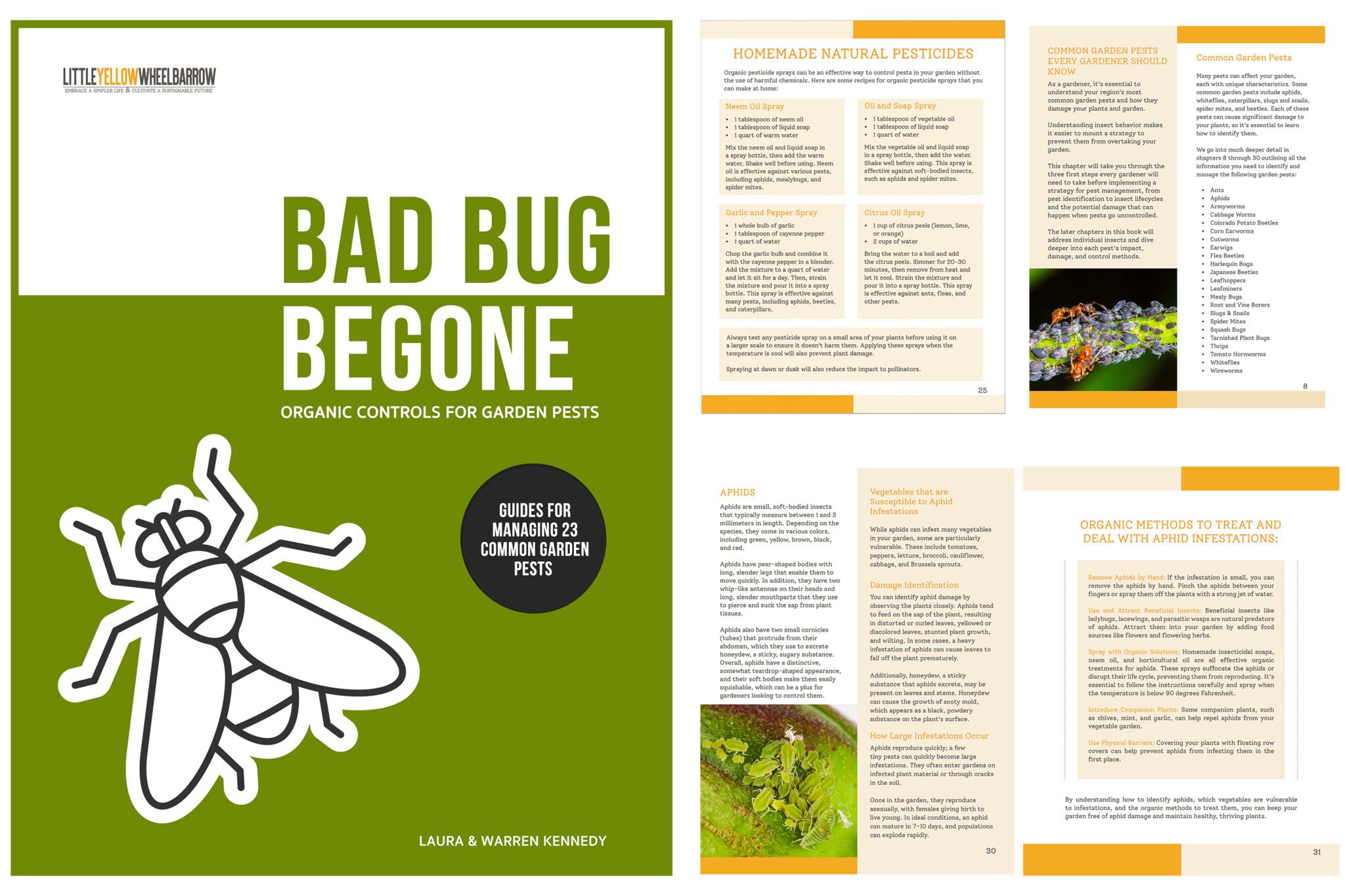
A must-have resource for Gardeners
Our digital e-book is for you if you’re a home gardener passionate about growing healthy, pesticide-free plants! Over 100 pages of organic pest management information are perfect for beginner gardeners and pros alike.
Common Diseases that Impact Hyacinth
You can avoid most diseases by inspecting bulbs closely before purchasing and planting. As you can tell by now, inspecting bulbs is the most important thing you can do to care for Hyacinth flowers. Avoid bulbs that are soft, shriveled, discolored in any way, or have scales at the bulb’s base. Many diseases are caused by overwatering and heavy moisture. As part of a preventative approach, be sure to plant Hyacinth in areas with good drainage.
Soft Rot
Infected plants with soft rot will produce plants that rot and fall over. In addition, bulbs will develop a sticky, foul-smelling coating.
To control soft rot, avoid overwatering or excess moisture around your plants. If plants develop soft rot, remove them with the soil they grew. Dispose or destroy but do not compost.
Be sure to sanitize all equipment and tools that come into contact with soft rot.
Mosaic Virus Diseases
Infected plants have stunted growth with yellow stripes or mottled foliage. Flowers will present a pale yellow-green color regardless of the color planted. Afflicted plants will wilt and eventually die.
There is no cure for plants infected with mosaic virus; be sure to remove and destroy them as soon as the disease is recognized. Do not compost.
Be sure to sanitize all equipment and tools.
Yellow Rot
Leaves will present with water-soaked stripes at the tips that eventually brown and die. Bulbs will have soft, rotted spots, and finally, the entire bulb will rot.
The best way to prevent yellow rot is to inspect plant bulbs very well before buying or planting. Yellow rot is often caused by overwatering and heavy moisture.
Plants and bulbs that are infected should be destroyed, including the soil they are growing. Do not compost. Be sure to sanitize all tools that contact the infected plants to prevent spread.

How to Care for Hyacinth – A gardeners guide
Hyacinths can be forever. If you take care of your bulbs and give your plants the right start, you can replant and propagate them year after year.
Try forcing some bulbs this winter to have for your Christmas displays. You won’t regret it! It’s a beautiful way to add showy flowers to your holiday decor for a few dollars a year.
- Learn More: Did you know that you can dry out your hyacinth flowers and keep them for up to a year? Check out our popular post about the best methods for drying flowers for information and inspiration. And our follow-up post on how to keep your dried flowers looking their best for as long as possible.
We have more flower gardening posts you may want to check out:
- Forget-Me-Nots – How to Plant and Care for These Wonderful Flowers
- The 12 Fastest-Growing Flowers: A Full Guide With Bloom Times!
- How to Grow Snapdragons from Seed to Glorious Displays of Flowers
- Impatiens Care – How to Grow An Abundance of Flowers in the Shade!
- 10 Lovely Flowers That Bloom at Night
- Bulbs for Spring Planting and Beautiful Summer Blooms
- How to Grow the Rarely Seen Queen of the Night


